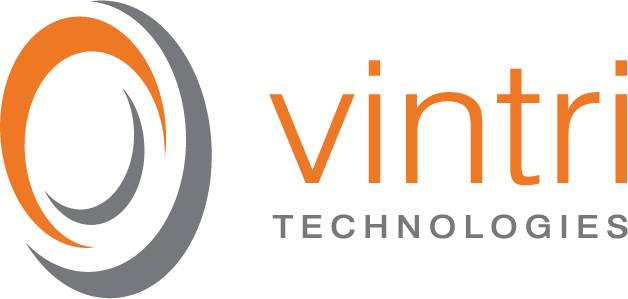Ensuring EPA Compliance in Gas-to-Liquids Operations: The Critical Role of Data Integrity
Gas-to-liquids operations depend on accurate, traceable infrastructure data—from processing units to storage tanks—to meet evolving EPA compliance standards.
In the gas-to-liquids (GTL) sector, owner-operators face increasingly complex regulatory expectations—especially from the U.S. Environmental Protection Agency (EPA). Unlike sectors where OSHA standards dominate compliance discussions, GTL operators are primarily concerned with meeting EPA environmental standards, which govern everything from emissions and air quality to wastewater discharge and toxic substance tracking.†
Achieving and maintaining EPA compliance isn’t just about operations—it’s fundamentally about data. Accessible, traceable, and trustworthy supply chain data has become a cornerstone for environmental performance, audit readiness, and avoiding regulatory penalties.
What Are Gas-to-Liquids (GTL) Operations—and Why Data Integrity Matters
Gas-to-Liquids (GTL) is a refining process that converts natural gas into high-quality liquid fuels such as diesel, jet fuel, and lubricants. This is achieved through a series of chemical transformations—typically involving gas reforming, synthesis gas (syngas) production, and Fischer-Tropsch synthesis—which reconfigure the molecular structure of methane into longer-chain hydrocarbons.
Because of the highly technical and regulated nature of GTL processes, these operations rely on complex infrastructure and interconnected supply chains. Each stage involves critical equipment and components that must meet strict environmental, performance, and safety standards.† This makes robust, reliable supply chain data management essential—not just beneficial.
Maintaining compliance with EPA regulations requires accurate, auditable data. Documentation such as Material Test Reports (MTRs), weld logs, inspection records, and calibration certificates are vital for proving that components meet design and regulatory requirements.††
Why EPA Compliance Demands More Than Just Good Intentions
EPA regulations require GTL operators to collect, validate, and report accurate infrastructure data that reflects their environmental footprint.††† This includes—but is not limited to—greenhouse gas emissions, hazardous air pollutants, water discharges, and fuel quality metrics.
A critical area of compliance is aligning with Process Safety Information (PSI) requirements under 40 CFR §68.65, particularly as they relate to recognized and generally accepted good engineering practices (RAGAGEP). As discussed in minute 26 of the AcuTech webinar, April 10, 2024, the EPA expects operators to routinely evaluate updated RAGAGEP and identify where existing infrastructure or practices may fall short.
If updated standards are retroactive—or signal new best practices—operators must demonstrate how current systems continue to meet safety expectations. Simply citing a lack of incidents is not sufficient. In fact, relying on outdated methods when newer, more protective practices exist can be seen as noncompliant, especially if changes are based on recent industry incidents or improved hazard awareness.
To meet these evolving demands, operators need a robust data management platform that ensures equipment specifications, inspection records, and operational procedures are traceable, current, and aligned with industry standards. Without this foundation, maintaining PSI compliance becomes significantly more difficult—and riskier.
Common Data Challenges Faced by GTL Operators
Operators often face these barriers:
Data Silos – Data spread across vendors and formats makes aggregation difficult.†
Unstructured Information – Inconsistent formats (PDFs, handwritten logs) slow analysis and reporting.
Inadequate Audit Trails – EPA audits require a chain of custody for critical infrastructure data.††††
Why a Verified Single Source of Truth Matters
In an environment of escalating regulatory scrutiny—particularly under the 2024 revisions to the EPA’s Risk Management Program (RMP) rule—operators need more than just scattered records or siloed systems. They need a Verified Single Source of Truth (Verified SSoT): a centralized, structured data foundation that ensures compliance data is accessible, accurate, and audit-ready.†
A Verified SSoT is critical because it delivers three foundational qualities:
Verified: All data is validated through workflows that align with regulatory expectations.
Single Source: Infrastructure, materials, and documentation data is consolidated, eliminating redundancy and confusion.
Of Truth: Every data point is fully traceable to its origin—whether from a vendor, sensor, or third-party certificate.
This structure supports the EPA’s emphasis on traceability, data integrity, and robust information management systems aligned with NIST protocols.†
How Structured, Trustworthy Data Powers Compliance
In today’s regulatory landscape—especially with the 2024 revisions to the EPA’s Risk Management Program (RMP) rule—structured, validated, and traceable data is not just helpful; it's essential for compliance [AcuTech Webinar, Apr 10, 2024].
For GTL operators, shifting from scattered, static documents to machine-readable, organized infrastructure data provides tangible advantages:
Faster Reporting – Automates data collation to meet tight regulatory deadlines.†††††
Reduced Risk – Prevents gaps in reporting and minimizes the risk of non-compliance penalties.
Simplified Audits – Enables full traceability, making regulator reviews less disruptive and more transparent.†
Lower Costs – Reduces the burden of manual rework and audit preparation, freeing up resources for core operations.
As EPA programs like GHGRP, NSPS, and NESHAP evolve, the burden of proof increasingly lies in the integrity and accessibility of infrastructure data—not just the intent to comply.††††††
The Bottom Line: Data Integrity is Compliance Integrity
For gas-to-liquids operators, compliance with EPA requirements is a business imperative. But the real differentiator is the quality and structure of data that supports regulatory filings and environmental performance. Disconnected spreadsheets and static PDFs simply can’t meet the traceability and verification demands outlined in updated RMP rules.†
This is where digital infrastructure solutions become critical.
The Vintri Solution: vintriCORE
Vintri Technologies’ flagship software, vintriCORE, is purpose-built to address the challenges of regulatory compliance and infrastructure integrity in the energy sector—including midstream, downstream, and GTL operations.
By establishing a Verified SSoT, vintriCORE helps operators ensure that all material and asset data is traceable, verifiable, and complete (TVC)—a data model aligned with expectations in the 2024 RMP revisions.†
For GTL operators managing large volumes of MTRs, inspection logs, emissions documentation, and calibration certificates, vintriCORE provides a solid foundation for compliance and operational excellence. It enables confident, efficient reporting by ensuring all data is accessible and up to date. Reliable audit trails are built into the system, giving operators the ability to respond to regulatory reviews with transparency and assurance. VintriCORE also supports clear and accountable compliance practices, reducing risk and improving trust with regulators. Most importantly, it empowers teams to make strategic operational decisions based on structured, accurate, and verifiable infrastructure data.
†AcuTech Webinar, Apr 10, 2024
††EPA GHGRP Guide, www.epa.gov/ghgreporting
†††EPA RMP Rule Summary, www.epa.gov/rmp
††††EPA RMP Audit Tips, www.epa.gov/rmp
†††††EPA RMP Reporting Guidance, www.epa.gov/rmp
††††††EPA Compliance Resources, www.epa.gov/compliance



